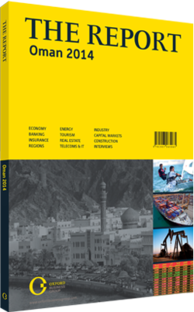Track to the future: A regional rail network is expected to help realise trade potential
One of the largest planned construction investment in the country is Oman’s national railway, estimated at $15bn. The government, funding the project with support from other GCC states, hopes that it will be a catalyst for economic diversification and underpin the long-term growth of sectors like manufacturing and logistics. The railway will link the major ports and growing industrial centres of the country, notably Sohar, Duqm and Salalah. The development of railways across the GCC member states is expected to help drive 35% growth of the region’s construction sector between 2013 and 2015, according to international press reports.
Opportunities
The Oman railway’s development will provide great opportunities for private and global contractors. Initial plans will see the 2244-km network link six cities in Oman and Buraimi on the UAE border (130 km from Dubai), and may later be extended to Yemen as well. The first stage of the network should be fully operational by 2018. Construction on the 1061-km first stage of the network is to start in late 2014. Leading up to this, contracts for several of the project packages will be awarded by the Oman Railway Company (ORC), a state-owned entity under the Ministry of Transport and Communications (MoTC), which will oversee the entire initiative, including procurement.
Italian state railway engineering company Italferr has already been selected to conduct preliminary design on the project, and the Tender Board has shortlisted bids for a project management consultant. In September 2013, Ahmed bin Mohammed Al Futaisi, minister of transport and communications, told the local press that the ministry was “asking the private sector to think about investment strategy and take advantage of the available opportunities” on the rail project.
Figures
According to Luka Beccastrini, Middle East regional head of Italferr, construction of the network will involve 1.7bn cu metres of cut-and-fill and 20.25m cu metres of earthworks. There will be 35 km of tunnels, 45 km of viaducts, 39 km of rail bridges, 48 km of wadi bridges and 245 flyovers and underpasses. There will also be 46 stations of various sizes, extensive support facilities like marshalling and intermodal yards, maintenance workshops, and supporting roads and security fences. Once operational, the railway will use diesel trains to move passengers at up to 200 km/hour and freight at 80-120 km/hour, according to the MoTC.
The first phase of the railway includes a 242-km stretch from Al Misfah in Muscat to Sohar Port, with a 20-km link to Muscat Central Station and an 8-km spur to a railway yard at Sohar. There is also a 486-km line from Muscat to Duqm Port and 84 km between Sinaw and Ibra in Oman’s east. International connections are also included, with a 136-km track from Sohar to Al Ain in the UAE, with a 27-km spur to the border town of Buraimi, and a 58-km line from Sohar to Khatmat Al Malaha, another border crossing.
Wider Access
The Omani railway will connect to a broader GCC network, meant to link the countries of the Gulf and beyond. In the longer term, the aim is to connect the GCC Railway to networks in the Middle East and Turkey – and then as far as Europe and Central Asia.
The project could be a real game-changer for Oman, and help generate long-term demand for the construction industry, both in maintaining the network and in developing the industrial, logistics and transportation infrastructure that the railway is expected to catalyse. The sultanate’s ports have the benefit of lying outside the Straits of Hormuz to the east and the Bab El Mandib to the west. However, Oman has not been able to make full use of its unimpeded access to the Arabian Sea and Indian Ocean partly because of a lack of a railway to move goods to and from the Arabian Peninsula. The GCC railway could alter the dynamics of regional trade significantly, and allow Oman to capitalise on its strategic location. As global real estate firm Cluttons said in a 2013 report on Oman, the railway could prove a “vital addition to the potential of the ports at Salalah, Duqm and Sohar to develop further as regional freight hubs”. This would have knock-on effects for logistics real estate in the country, particularly around those crucial ports.
You have reached the limit of premium articles you can view for free.
Choose from the options below to purchase print or digital editions of our Reports. You can also purchase a website subscription giving you unlimited access to all of our Reports online for 12 months.
If you have already purchased this Report or have a website subscription, please login to continue.

